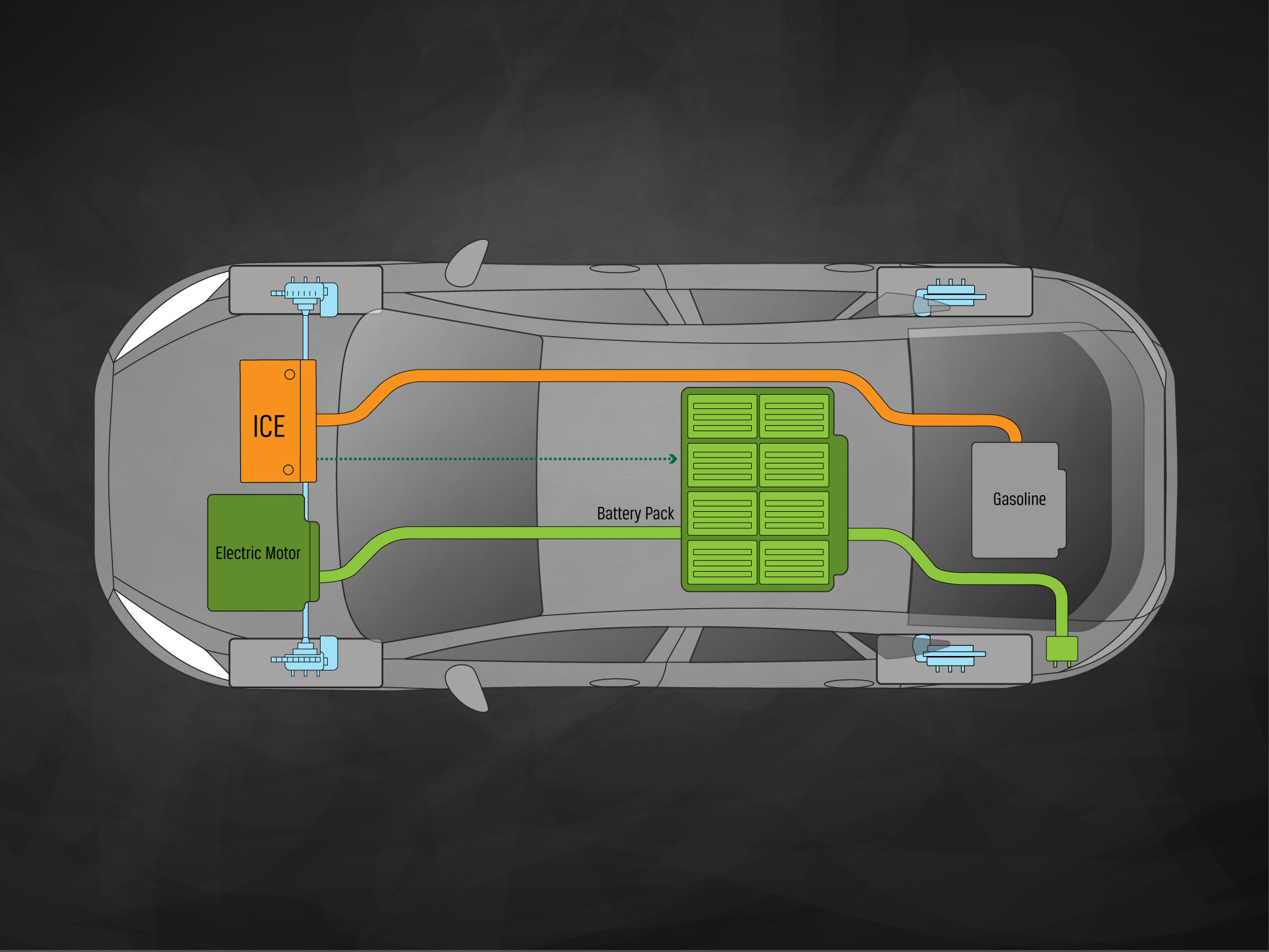
Battery Electric Vehicle
A battery electric vehicle (BEV) runs exclusively on electricity using on-board batteries that are only charged by plugging into an outlet or charging station. A BEV has the largest energy storage capacity (16 to 90 kWh) of all EV categories, and it uses lithium-ion battery technology, which offers the highest energy-to-weight ratio. A BEV may have one electric motor (up front), two motors (one front and back) or four motors (one at each wheel). Vehicle range is from 50 to over 200 miles.

Hybrid Electric Vehicle
A hybrid electric vehicle (HEV) uses both an electric motor and an internal combustion engine (ICE). In a parallel design, the two drive sources can operate independently or together to drive the wheels. The battery pack in an HEV is only charged by the ICE, while a plug-in hybrid electric vehicle (PHEV) adds a plug and a larger battery pack that can also be charged from the electric grid. HEVs typically have smaller batteries (1 to 18 kWh capacity) using cheaper nickel-metal-hydride battery technology. Electric-only range is from 3 to 25 miles.

Extended-Range HEV
Extended-range hybrid electric vehicles (EREV) operate like electric-only BEVs, but with the addition of an internal combustion engine. In a series design, the ICE charges the battery which powers the electric motor that turns the wheels. Unlike with HEVs, on an EREV the gasoline engine is never used directly to turn the wheels. A plug-In option allows charging of the battery from the grid as well. Electric-only range is from 50 to 100 miles.
The different types of electric vehicles come with their own pros and cons. The gasoline engine in hybrid or extended-range vehicles offsets some of the environmental benefits and fuel-cost savings of a purely electric vehicle. But on the other hand, the added boost of an internal combustion engine will help you drive many more miles before you need to recharge the battery. There are a variety of options to consider as you decide which electric vehicle is right for you.


Recent Comments